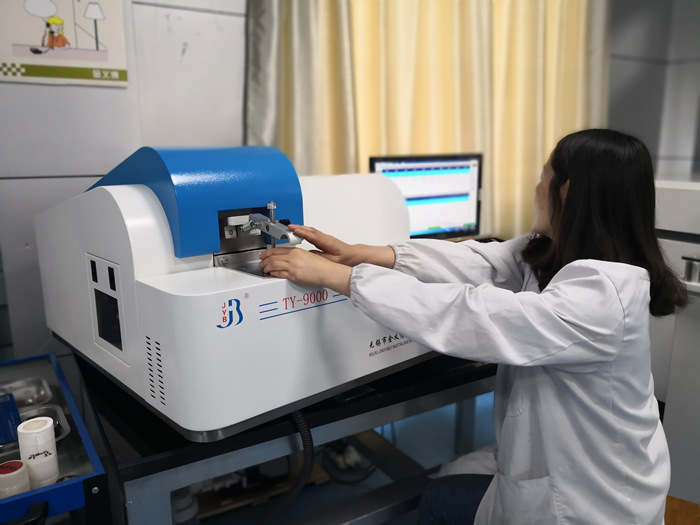Classification and characteristics of Optical Emission Spectrometer
Apr 20 , 2022Classification and characteristics of Optical Emission Spectrometer
According to the different characteristics of different systems, the Optical Emission Spectrometer can be divided into many types: for example, it can be divided into fixed and portable according to the size of the instrument; according to the different wavelength range, it can be divided into vacuum type and non-vacuum Optical Emission Spectrometer. According to the excitation method of the sample, the instrument can be divided into three types: electric spark, arc and glow power generation; according to the structure of the instrument, there are simultaneous multichannel direct reading spectrometer and scanning single channel Optical Emission Spectrometer; according to the detection the types of detectors can be divided into photomultiplier tubes (PMT) and solid-state detectors.

The Optical Emission Spectrometer has the following characteristics. ① High degree of automation, good selectivity, simple operation, fast analysis speed, and simultaneous multi-element quantitative analysis. As long as the surface oxide layer is removed from the sample taken from the furnace, the solid sample can be excited on the sample table, eliminating the trouble of drilling samples by chemical analysis. For aluminum, copper, zinc and other non-ferrous metal samples, the surface oxide layer can be milled with a small lathe. The pre-burning sample to the final analysis result only takes 20 to 30 seconds. Especially for those elements that are easy to burn, it is easier to control the final composition. All analytical elements (several or even dozens) in the sample can be analyzed simultaneously at the same time. ②Wide element test range. Because PMT or semiconductor detector has strong signal amplification ability, PMT or solid detector with different method magnification can be selected for spectral lines with different intensities. On the order of magnitude, for example, the chromium content in ordinary carbon steel is generally one ten-thousandth level, while the chromium content in stainless steel is more than 10%). Therefore, the same analysis conditions can be used to determine many elements in the sample that differ widely in content from high to trace levels. ③ the analysis accuracy is high, and the chemical composition of the product can be effectively controlled. It can be seen that the expensive alloy composition is controlled to the lower limit of the product specification, and the instrument saves the consumption of the corresponding alloy. ④ Low detection limit. The sensitivity of Optical Emission Spectrometer is related to the properties of light source, instrument state, sample composition and element properties. Generally, when a spark source is used for solid metals and alloys, the detection limit can reach 0.1 ~ 10ug / g, and it also has a good detection limit for non-metal elements such as C, S, and P.